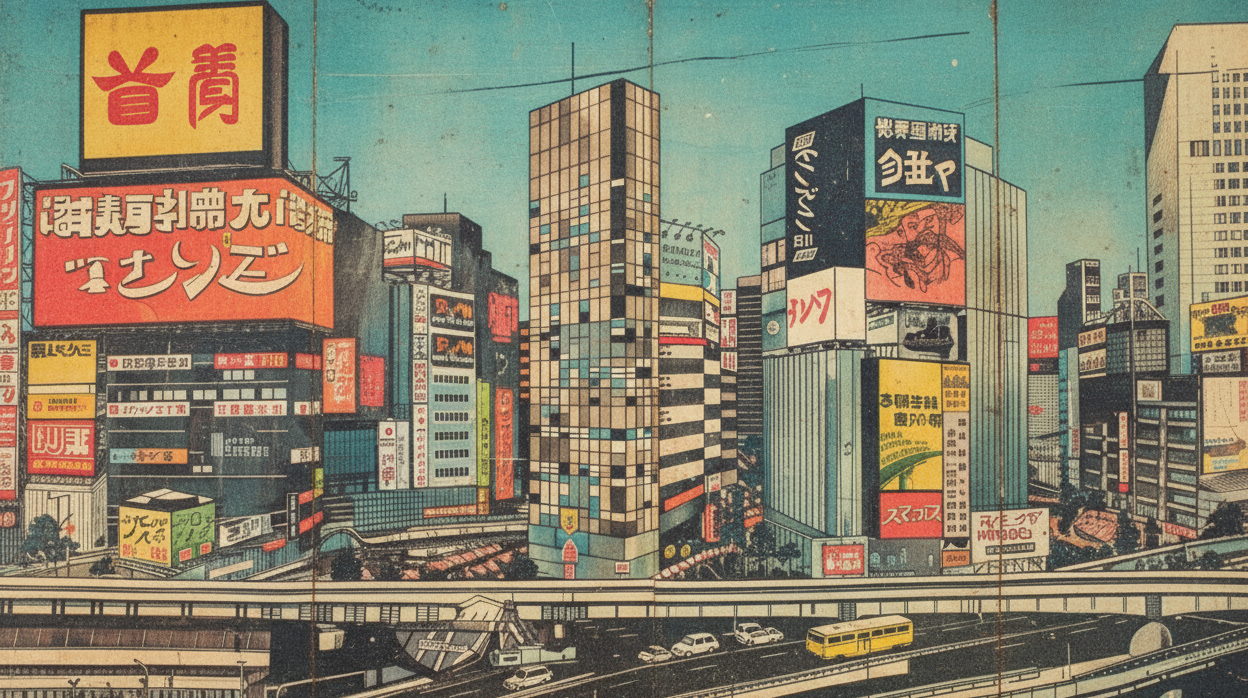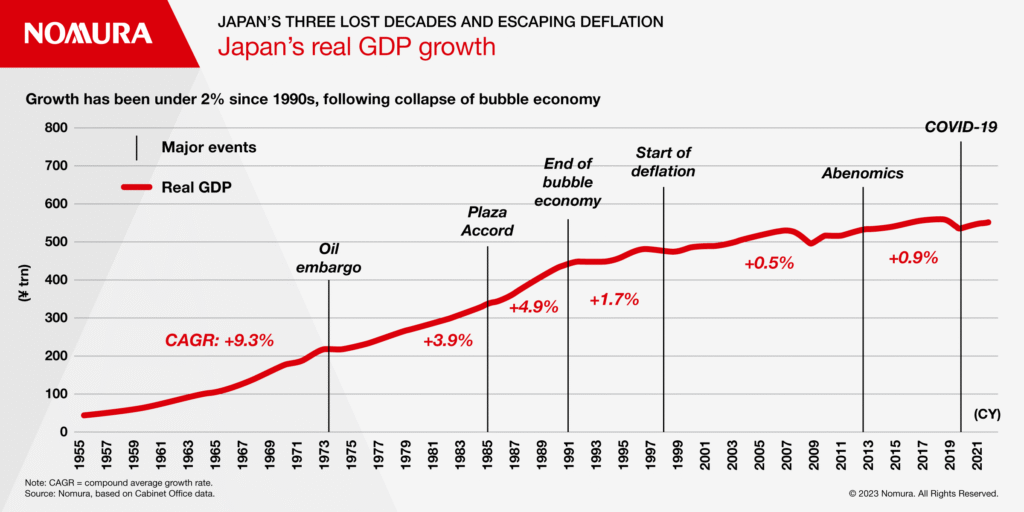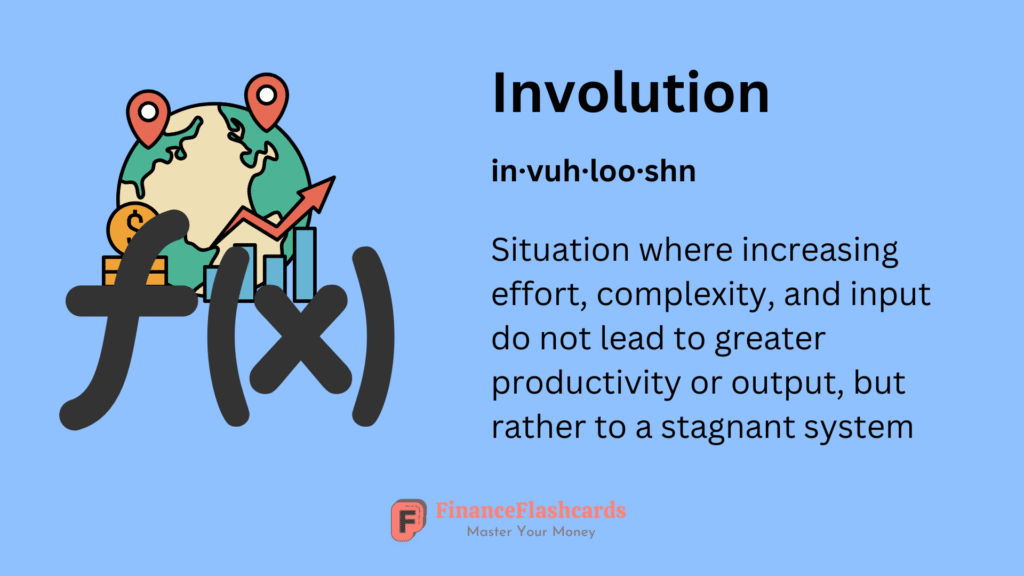Uncovering Japan's Lost Decade
There is a saying in Japan, “七転八起 ” (Shichiten-hakki), which means fall down seven times, get up at eight.

Post-War Collapse and the Road to Recovery
Post WW2, Japan had faced several setbacks; its real GDP fell by 50% one of the most disastrous falls the nation has ever witnessed.
Japan was part of the US-allied occupation post the devastating war it had witnessed. It required a comeback, major reforms were introduced for the purpose of economic stabilisation, including demilitarisation, anti-monopoly laws, a fixed exchange rate system with the dollar, i.e. $1 = 360 JPY, making it a full-fledged democratic country.
The Economic Miracle and Oil Shock
While Japan was experiencing extraordinary growth, it faced a big blow in 1973 (The Oil crisis ) since Japan imported majority of its energy resources for technological production, this created a domino effect, with an increase in oil prices leading to a rise in production costs, which in turn affected its exports, and inflation rose to a whopping 24.9%. This eventually led to a decrease in its growth rate from 10% to 5%. They managed to cope with this by diversifying the countries from which they imported oil and stocked oil reserves.
The Asset Bubble and the Lost Decades

During the year 1985, US Treasury Secretary James Baker held a meeting with the world’s leading economic powers at the Plaza Hotel in New York. They agreed to lower the US dollar relative to other currencies, including the yen. This lead to Japanese exports nearly twice as expensive which risked sending Japan into a recession to prevent a recession and boost the economy in 1986 the Bank of Japan decided to hold a low interest rate policy making it cheap to borrow money and this money flowed into the land and stock markets the interest rate used to lend to commercial banks was brought to a record low. Most of the businesses in Japan were having speculative profits, not the profits from actual business operations.
It was estimated that the Nikkei index would reach a peak of 38,915, and a bold prediction was made that it would reach 80,000 by 1995; however, Japanese stocks had already increased three times faster than corporate earnings, even when including unsustainable speculative profits in company earnings.
Things were about to take a dramatic turn, nearing the end of 1989, this all led to an asset bubble forming but it was eventually popped when Yasushi Mo the new governor of the BOJ, ordered to raise the interest rates, unlike other asset bubbles, which showed results instantaneously. This bubble showed its results over time.
This eventually led to Nikkei dropping nearly 60% from its peak & within a few years, prices in real estate started tumbling. A lot of people were affected due to this, sending Japan into recession.
The Bank of Japan, rather than taking corrective measures, had a rather aggressive macroeconomic policy stance to revive the economy. They had come to a situation where they also kept the interest rate at “0%”. A banking crisis took place in 1997, when corporations were unable to repay the loans. Instead treating these as Non-Performing Assets, banks decided to give these big companies breaks, either by lowering the interest rates or forgiving part of the loans that were unlikely to get paid back to maintain employment and avoid company closures & layoffs. Banks couldn’t hold in & the government had to step in to safeguard the interests of these banks.
The Liquidity Trap and Demographic Challenge
During this period, Japan’s economy grew on an average 0.8% on a real term basis. This eventually justifies the name ” The Lost Decade” which should rather be called as Three Lost Decades. During this period, the Japan job market was stagnant, offering lifetime employment, which eventually led to low job opening positions for the young population.
You may be wondering, with low interest rates as low as 0% why would people not step in & purchase & investment this is because of the belief that they would rather hold cash and maintain liquidity with themselves. Here, the monetary policy became ineffective, the central bank had to step in and introduce quantitative easing to bring new cash & spread it into the economy.




